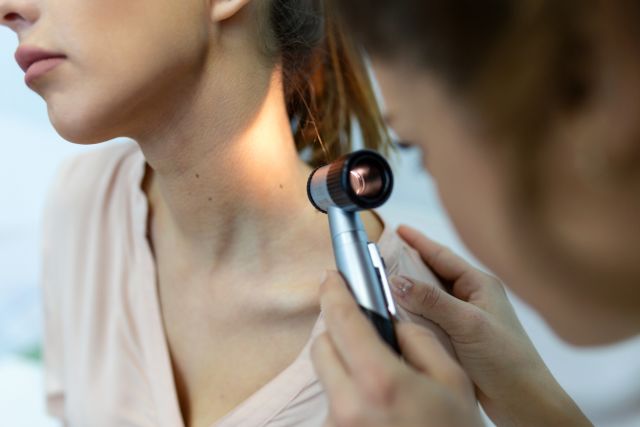People get moles removed for a handful of reasons. Sometimes it’s purely cosmetic, other times it’s because the mole shows signs of potential skin cancer. Whatever the case, the last thing you’d expect after getting a mole removed is for it to pop back up again. But the truth is, it can. “It’s a common misconception that patients think when we do a biopsy it’s going to be completely removed, and often it’s not,” says dermatologist Melissa Kanchanapoomi Levin, MD, of Mount Sinai Icahn School of Medicine and Marmur Medical in New York City. So why can a mole sometimes grow back after it’s removed? It all boils down to how it’s removed in the first place.
Cosmetic mole removal
You may have a mole on your face that you don’t consider quite as fetching as the one on Cindy Crawford’s -- and you just want it out. Dr. Levin says that when moles are removed for cosmetic reasons, “there are two ways that moles can be removed: a shave removal or a full thickness excision. Often times, we shave them flat, because a full excision requires stitches and can often result in a larger scar. A shave removal, however, does not remove all the mole cells and therefore, they can recur. I explain to my patients that moles sit like an iceberg. When you shave the base, there can still be mole cells deeper and then the mole can recur..” Dr. Levin cautions that you should avoid having a mole removed with a laser. “When you laser a mole, you’re not lasering the mole cells, you’re lasering the pigment. More seriously, when you laser a mole, the surrounding tissue/skin can be altered and if the mole recurs and repigment, this can be concerning for melanoma. Unfortunately, after the mole has been lasered, it can be difficult to accurately diagnose it as a benign mole or melanoma,” she says.
Removal of suspicious moles
If you had a mole removed by a dermatologist and didn’t get stitches, chances are you had a shave biopsy. During this common procedure, a dermatologist numbs the area of skin around a mole and shaves off the top layer of skin. In cases where the mole shows concerning signs for skin cancer, the dermatologist sends the skin sample to a lab to find out whether the mole is benign, atypical or melanoma. While a shave biopsy is good in that it’s quick and causes minimal scarring, the downside is that it only removes the top part of the skin. “Often times we’re not removing all the cells of the lesion, so they can regrow or repigment,” says Levin. Your doctor may do a punch biopsy if a deeper skin sample is needed.
Procedures where moles don’t grow back
When a mole is cancerous, Levin says a dermatologist will likely use one of two options to fully remove the mole. The first is an excision, where the doctor cuts the area where the mole was or is all the way down to the fat. The second is Mohs surgery, which is typically done on cosmetically sensitive areas, like the face. During Mohs surgery the surgeon removes the thinnest possible layer of visible cancerous tissue and immediately processes the tissue to check for cancerous cells. Once the entire area comes back as non-cancerous, the surgeon stops. Both procedures usually require stitches and can leave a scar.
Spotting cancerous moles
“If [a mole] recurs it doesn’t mean it’s 100% safe,” say Levin. “Sometimes it’s not even the same type of mole. It could have changed.”
In order to spot a cancerous mole, Levin recommends following the abc’s of melanoma. Signs that a mole should be checked include:
- asymmetrical shape
- irregular borders
- more than one or uneven distribution of color
- larger than 6 mm (the size of a pencil eraser) in diameter
- evolving (meaning any change in shape, size, color)
Additional red flags include a mole that is bleeding, ulcerated, red, very dark, multicolored or itchy.
Bottom line: “If something comes back, you should definitely see your dermatologist. There’s no harm in that,” says Levin. At the same time, she says, it’s a good idea to have your dermatologist do a total body skin check. “That means looking at you from head to toe in every nook and cranny,” she says. “You can get melanoma in the back of your mouth, genitals and anus. Even in places where the sun never shines, you can still get melanoma.”






